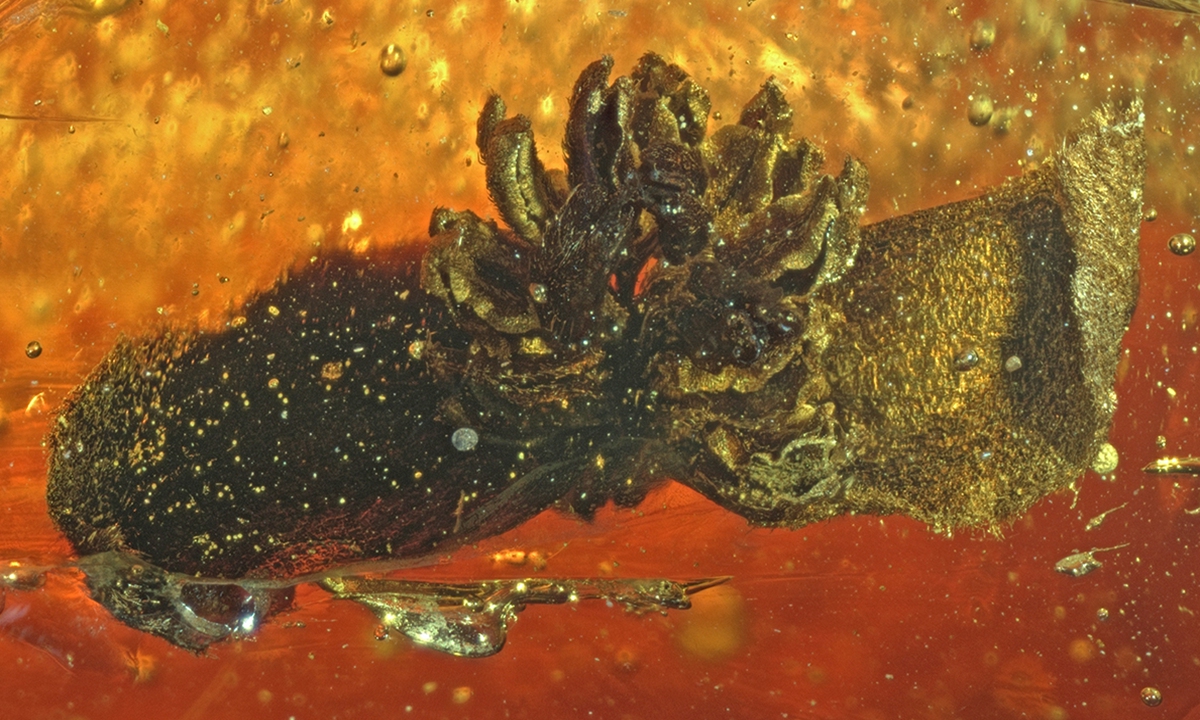ARTS / CULTURE & LEISURE
15 million-year-old fossilized Parrotia flower discovered for the first time in East China

The fossil Parrotia flower Photo: Courtesy of Professor Shi Gongle
A team of paleobotanists from China and Germany recently reported the discovery of a Parrotia flower from approximately 15 million years ago perfectly preserved in amber from Zhangpu, East China's Fujian Province.
"This find marks the first-ever and the only instance of a fossil Parrotia flower," Shi Gongle, the leading scientist of the research team and a professor from the Nanjing Institute of Geology and Palaeontology of the China Academy of Sciences (CAS), told the Global Times on Sunday.
The findings from this research, entitled Parrotia Flower Blooming in Miocene Rainforest, were published in the international biology journal, the Journal of Systematics and Evolution.
According to the paper, the discovered Parrotia flower is an exceptionally well-preserved male flower. Similar to its modern relatives, this ancient flower lacks petals. It is subtended by a pair of prominent bracts and bears 12 stamens, each with a short and slender filament and a vertically elongated anther.
However, unlike its modern descendants, this newly discovered ancient Parrotia thrived in a tropical rainforest environment.
"The newly discovered Parrotia lived in tropical rainforests about 15 million years ago, indicating that the species was once prosperous during this period," Shi said.
According to Shi, the research team also analyzed other fossil flora containing Parrotia worldwide. The results showed that unlike the very limited, fragmentary distribution of modern Parrotia, it had a widespread presence in Asia and Europe approximately 23 to 5 million years ago.
"This tiny Parrotia flower reveals the ancient environmental changes that have shaped the existence of this 'living fossil' over the ages, providing us with new insights into its rise and decline," Shi noted.
To honor the eminent Chinese paleobotanist and member of the CAS, Professor Zhou Zhiyan, who made remarkable contributions to the field of paleobotany, the scientific team has named this newfound ancient Parrotia species "Parrotia zhiyanii."
Parrotia is an angiosperm that has survived from ancient times to the present day. Parrotia subaequalis, one of the two modern species of the genus, is critically endangered in the wild in eastern China, and often referred to as a "living fossil" in the botanical world. With its graceful appearance, luxuriant branches and leaves, vivid red anthers in early spring, and vibrant multicolored autumn leaves, Parrotia is valued for its ornamental qualities and is a renowned garden and landscape tree.

